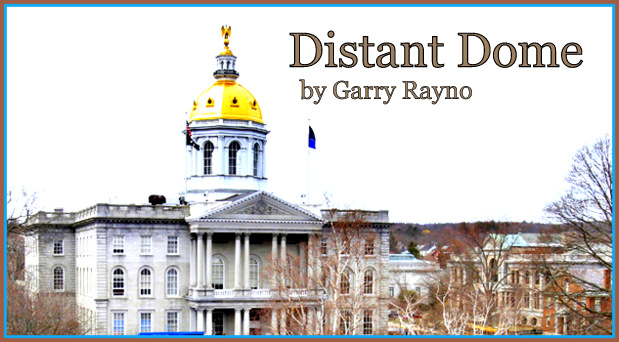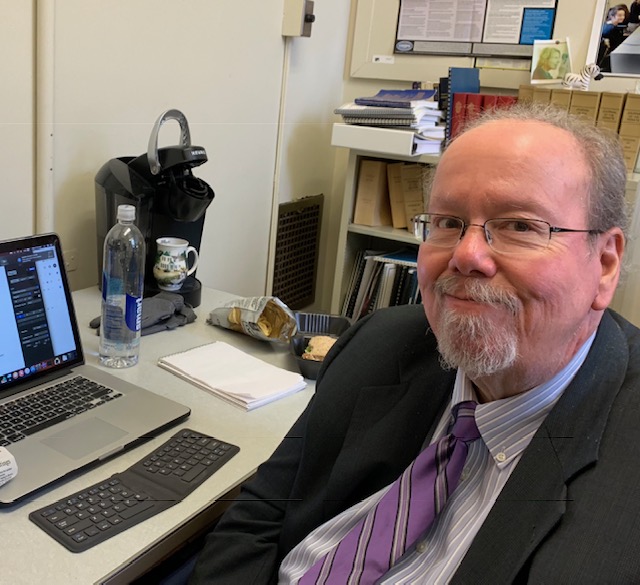
By GARRY RAYNO, Distant Dome
If you followed the New Hampshire legislature the last few terms and listened to Education Freedom Account advocates, you would think public schools are cesspools of indoctrination, obscene materials, bullying and protectors of perverts.
But Saturday, about 1,600 people went to Kearsarge Regional High School, parked their cars along both sides of all the roads in the vicinity, some a mile or more away, to ensure the Kearsarge district is not Croydon or Pembroke who had their school budgets slashed, and instead expressed their love for public education and the educators who work with their children.
At the very last minute, a petition article was presented to the school board to cap the school district’s budget at $27,000 per student, down from the proposed budget’s spending, which provides $33,000 per student.
After 1,556 votes were cast and counted, an astounding 1,435 voted “No,” or 92 percent, while 113, or 7 percent voted “Yes.”
And the $33,000 is a misleading figure because as a regional school district all the school facility costs are included in the district’s budget, while one-town districts, school facilities are under the town’s purview, as are other related costs like transportation.
The proposed cap would have reduced the seven-town district’s budget by 17 percent, cutting about $10 million of the $55 million budget for next school year, which school board members said would close one elementary school, lay off more than 25 teachers and most paras, cut sports, bus service, etc.
Students, teachers, current and former school board members, parents and grandparents, and state and school officials lined up to sing the praises of Kearsarge as a caring, professional community, an inspiration and an institution that changes lives.
One former student, Charles Giles of New London, praised the school for being responsible for making him the person he is today and he asked the district educators at the meeting to stand up so they could be recognized for the wonderful work they do, as many applauded.
Diane Richter, a Bradford veterinarian who lives in Warner, praised the school and educators for taking care of her three sons and helping make them the people they are today, noting they have high functioning autism.
With the cap, there may not be the money to help other students like her sons, she noted.
Other parents told similar stories about the Kearsarge schools and how they were a godsend to their children.
One elementary student, who could barely stand tall enough on his tiptoes to speak into the microphone, asked that his Sutton Central School not be closed as it was the one targeted under the cap.
Not everyone was there to defeat the spending cap, first allowed for school districts this year after the legislature passed a bill last session to allow such caps and Gov. Chris Sununu signed it into law.
Some noted the continual budget increases while school enrollment is declining, while others suggested administrative costs had skyrocketed and there was little transparency although school board and budget committee members noted no one attended the multiple hearings and meetings that were all noticed on the budget which they presented to the annual meeting.
Several people repeated culture war arguments about teachers protecting kids from their parents, indoctrination and poor achievement scores, but that brought boos from people who disagreed.
Municipal Budget Committee member Claire Ketteler was one of the people behind the spending cap petition, and told the meeting, she viewed the article as a way to begin addressing the ever-increasing burden on the property taxpayers of her town, Newbury, and others in the district.
She said the proposal would not be as devastating as opponents say.
But several people said the spending cap approach was the wrong path to finding a solution to the real problem it tries to address, rising property taxes.
Former school board chair Ken Bartholomew of Warner said the problem is state support for public education is the lowest in the nation at 21 percent while local property taxes pay for more than 70 percent, or $2.5 billion, of the $3.5 billion spent on public education.
He noted when he was chair of the board, the state stopped paying its 35 percent share of the employers’ cost for teachers and administrators in the state retirement system.
Bartholomew said the state has never fully funded the catastrophic special education aid program for districts that have larger than anticipated costs due mainly to out-of-district placements and that also shifts costs to property taxes.
Recently Education Commissioner Frank Edelblut told school superintendents they could expect less state help with special education costs, and suggested they might be able to deal with the loss by using the EFA program to provide services for special education students although few are in the program and those that are lose their federal protections when they leave public schools.
Newbury School Board member Kristin Schultz also laid the blame at the feet of the New Hampshire legislature noting two recent court decisions that told lawmakers to change the education funding system and put much more money into it, but lawmakers failed to do anything.
Instead she said they have approved the EFA program that takes money from the Education Trust Fund and away from public education.
Municipal Budget Committee member Rep. Thomas Schamberg, D-Wilmot, also made the same case saying the state needs to pay for far more of public education to meets its constitutional obligation to provide and pay for an adequate education for all the state’s children.
While the vast majority of people attending the deliberative session at Kearsarge Regional School District touted their support for their school system and the job it does with their children, the Kearsarge voters are a good example of what is happening outside the hallowed halls of the State House where outside dark money from billionaires has hand-picked lawmakers who will do their bidding in the war against public schools, environmental protections, business and financial regulations, and labor unions.
Under this monetary protection, lawmakers have failed to meet the requirements the state Supreme Court established in the Claremont I and II decisions that said the state has a responsibility to provide each student with an adequate education and pay for it with a constitutional tax, not with property taxes with widely varying rates, which it ruled was unconstitutional.
The two recent superior court decisions reflect the Claremont decisions made nearly 30 years ago.
But one bill to be introduced this upcoming session, would declare “the directives of the judicial branch in the Claremont cases that the legislative and executive branches define an ‘adequate education,’ adopt ‘standards of accountability,’ and ‘guarantee adequate funding’ of a public education are not binding on the legislative and executive branches.”
In other words lawmakers should ignore the Claremont decisions which give the state’s children a fundamental, constitutional right to an adequate education that the state must pay the cost.
If lawmakers only had the same respect, enthusiasm and love of public education as the 92 percent of voters at the Kearsarge Regional School District annual meeting, the issue of spending caps would never have to come up.
Instead here is one more attempt to divide people, create chaos and disruption to destroy public education and ultimately democracy.
Thankfully the voters of the Kearsarge Regional School District and probably many more around the state will say they instead seek a solution for their beloved public education.
Garry Rayno may be reached at garry.rayno@yahoo.com.
Distant Dome by veteran journalist Garry Rayno explores a broader perspective on the State House and state happenings for InDepthNH.org. Over his three-decade career, Rayno covered the NH State House for the New Hampshire Union Leader and Foster’s Daily Democrat. During his career, his coverage spanned the news spectrum, from local planning, school and select boards, to national issues such as electric industry deregulation and Presidential primaries. Rayno lives with his wife Carolyn in New London.





